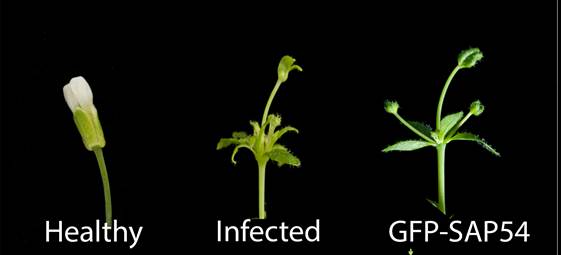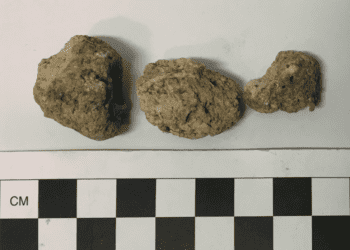Many parasites affect their hosts’ behavior, up to the point where the host can sacrifice itself for the wellbeing of the parasite; it’s an extremely cruel fate for the host, but a really good evolutionary adaptation for the parasite. Good examples are horsehair worms that reach water by forcing their cricket hosts to drown themselves, and liver flukes that drive infected ants to climb blades of grass, where cows can eat the insects. Now, scientists described a parasite which makes plants grow more leaves instead of flowers, thus making them more attractive for insects which come and eat them, thus spreading the parasite to more flowers.

At that point, the plant is basically a zombie – and a team of scientists from the John Innes Centre in Norwich, UK, has now described how this works.
“The plant appears alive, but it’s only there for the good of the pathogen,” says plant pathologist Saskia Hogenhout from the John Innes Centre in Norwich, UK. “In an evolutionary sense, the plant is dead and will not produce offspring.”
Some scientists disagreed with the idea of “zombie plants”, but the research team believes this is a perfectly valid term.
“Many might baulk at the concept of a zombie plant because the idea of plants behaving is strange,” says David Hughes, a parasitologist at Pennsylvania State University in University Park. “But they do, and since they do, why wouldn’t parasites have evolved to take over their behaviour, as they do for ants and crickets?”
The bacterial plant parasite called phytoplasma relies on insects like leafhoppers (Macrosteles quadrilineatus) for its dispersal to crops like grapes, coconuts, and oilseed rape. It interacts with the plant protein RAD23, and eliminates the plant’s ability to make any more flowers, forcing it to focus on leaf development, which attracts more leafhoppers. The team found that leafhoppers lay more eggs on infected plants. It’s truly a remarkably “evil” mechanism.
“The beauty of the paper is that the bacteria control both plant and insect at the same time with the same protein,” said Hughes. “That’s stunning.”
Scientific Reference.






